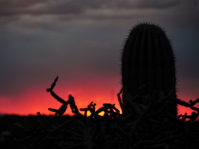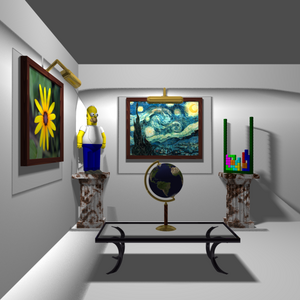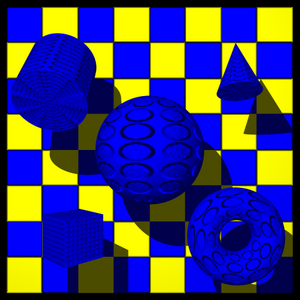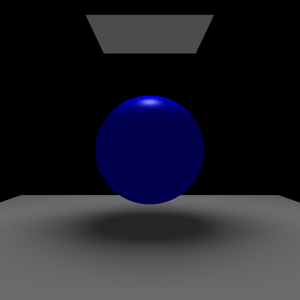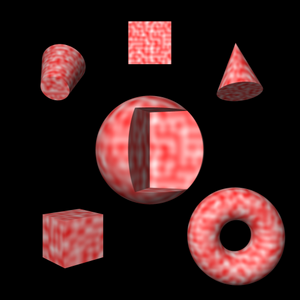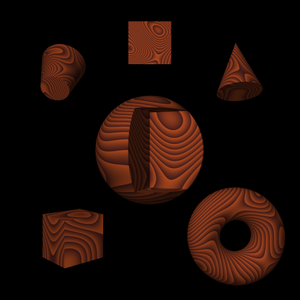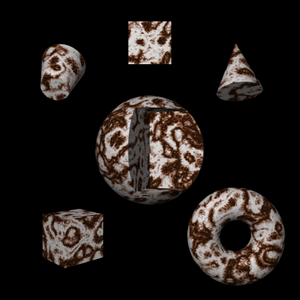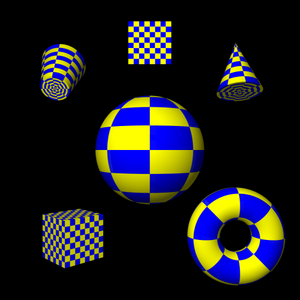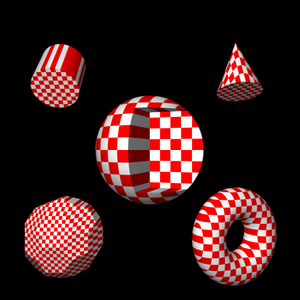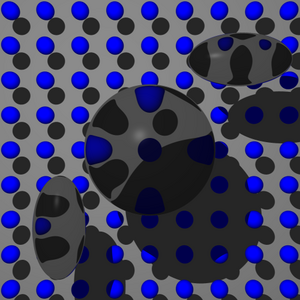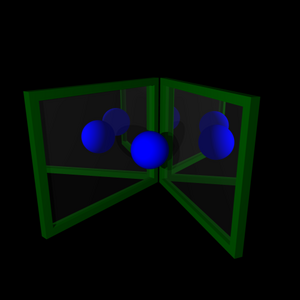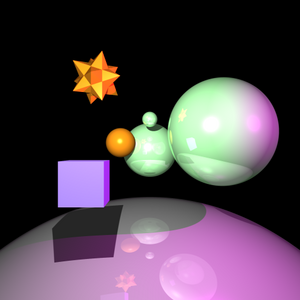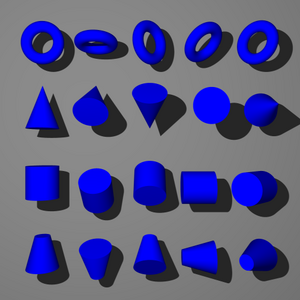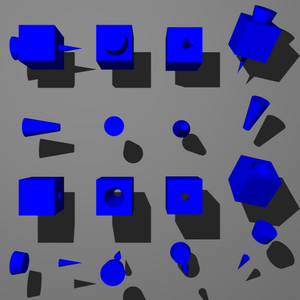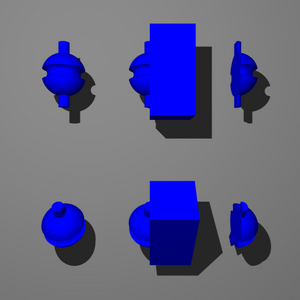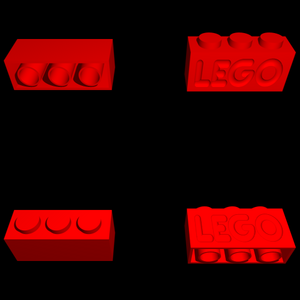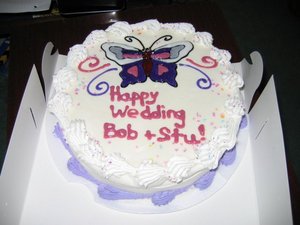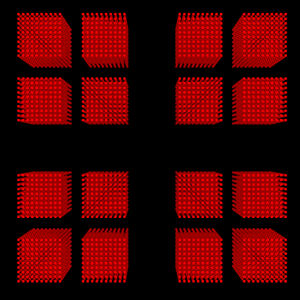Well, I finished my ray tracer. By which I mean today is the due date. It turned out pretty well I think, but I won't know for sure until tomorrow. I created a series of web pages for the presentation and they are posted on this site. I've added a link to my menu above, or you can click here. Be sure to check out the movie in addition to all the images, and, if you are so inclined, the documentation gives a fairly thorough technical description of a lot of the stuff.
Here is my final scene, I'm pretty happy with the modelling of it, but I never got the lighting quite right. There are area lights in each of the lamps over the pictures, but they illuminate too much of the scene. There is also another area light located on the ceiling. The rendering of this image took a very very long time.
